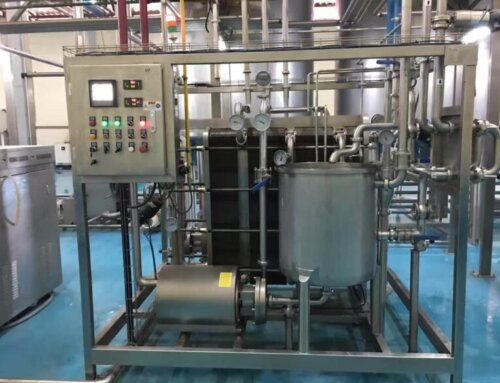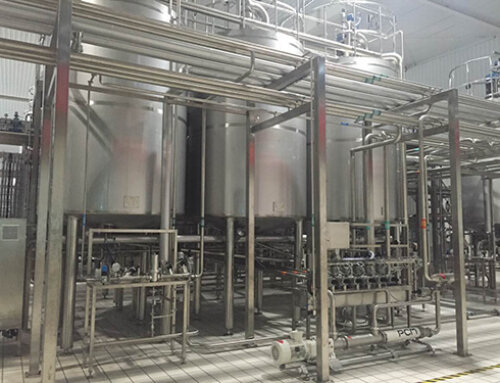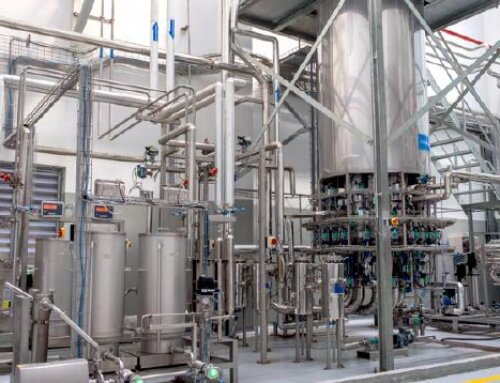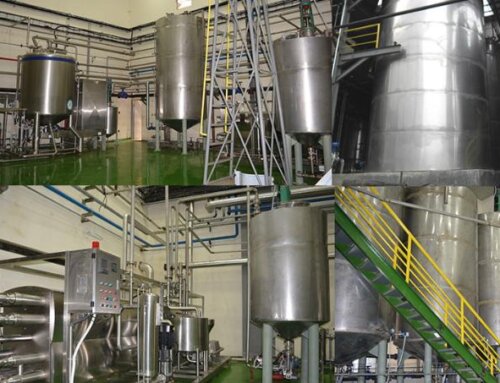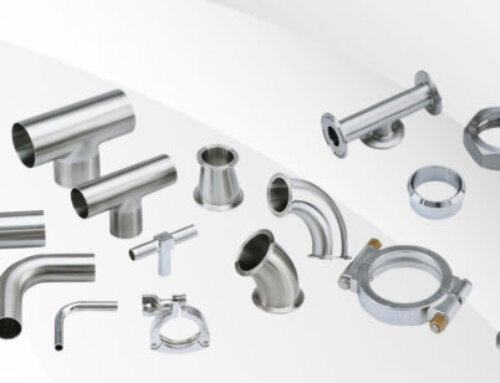Description Of Apple Cider Processing Plant
- Apple cider vinegar is a very common drink, It has a sweet, sour delicate taste. Drinking apple cider has the effects of enhancing immunity, sterilizing and detoxifying, skincare and whitening, eliminating fatigue, lowering blood pressure and blood lipids, and promoting digestion.
- Apple cider vinegar drinks are made from high-quality concentrated apple juice or fresh apples that are squeezed into apple juice, the apple juice will be fermented into apple alcohol, and then inoculated acetic acid bacteria, the apple alcohol is fermented into apple cider vinegar, and then after blending, filtering, aging and sterilizing to formulate apple cider vinegar beverages with different acidity of 1%-3%.
- If using the fresh apple as raw material, then the apple cider processing flowchart is fresh apple after harvest, “sweating”, washing, grinding, pressing, blending, fermentation, aging, filtering or fining, bottling or canning.
- The capacity of the apple cider processing plant is from 1T/H to 30T/H, and the end products can be filled into glass bottles or metal cans.
- Sugar, apple juice, yeast, flavoring agent, acetic acid bacteria are the main material for apple cider making, but some countries will also add CO2 into the apple cider to make into sparkling apple cider.
- We offer turnkey solutions for fruit wine and fruit vinegar processing, customized highly flexible and rigid machines.

Technological Flowchart For Apple Cider Processing Plant
The fresh ripen apples after harvesting, then stored in a dry place for 7-10 days to soften the apples. After that, you can proceed fresh apples into apple cider. The fresh apples will be washed and sorted to get the high-quality clean apples, then the apples are crushed in a hammer-type mill made of stainless steel. Next, the apple pulp is crushed to extract the juice using a cider press. Then the fresh apple juice will be pasteurized to remove the pectin and inactivate the enzyme, after that, the freshly pasteurized pressed juice may be fermented straight away or concentrated and stored for later conversion to cider. After alcohol fermentation or acetic acid fermentation, the apple cider is made, but the cider is cloudy, to make the clear cider, usually, the plate and frame filter system and ultrafiltration system will be used, after the apple cider is clarified, then the cider will be transferred to aging tank for further clarifying, then the clear apple cider will be pasteurized and then hot-filled into bottles or cans. After filling, the bottles or cans will be cooled to room temperature by spraying pasteurizing cooling machine, and then after labeling, coding and packing into the cartons.

Apple Cider Processing Plant Machine Introduction
Fresh apple harvesting
The fresh apple needs to be a relatively high sugar content for alcohol production, a fibrous tissue to facilitate juice extraction, tannin to provide a bitter or astringent taste and a pleasant apple taste and aroma, so it can obtain fine-flavored, well-ripened apples with good levels of acid and tannin.

Apple “Sweating”
The ripened apples should be stored on a concrete or wooden platform for about a week to ten days to make it soft, and for the crushing and pressing, giving better juice yields.

Apple washing and sorting
Use the water flume and air bubble water washing tank to clean the apples, and the purpose of washing is to remove leaves, twigs, harmful bacteria, insects, and any spray residues. Then the clean apples will be sent to the conveyor for the sorting.


Apple grinding and juice extracting machine
In order to extract the maximum amount of juice the fruit should be ground or milled to a fine pulp by the hammer mill. Apples may be ground whole, including cores and skin, then the apple mash will be sent to belt press for the juice extracting.

Apple cider fermentation tank
Natural fermentation of cider takes can take place in two stages:
1) The yeast flora are “feed” by the natural hexose sugars and the products of fermentation are: alcohol and carbon dioxide (CO2). Depending on the temperature and the juice constituents this type of fermentation can last for weeks or even months as long as the sugar is available to the yeast. When sugar is no longer available for yeast, the fermentation slows and then stops.
2) The lactic acid bacteria ferment the natural malic acid found in apples into CO2 and lactic acid. A malo-lactic fermentation (usually occurs spontaneously) is desirable if the cider is harsh and acidic at the end of the first fermentation; it also results in a smoother and gentle cider.
Fermentation is temperature-dependent. Lower temperatures take longer for the product to change from sugar to alcohol, but also help to maintain fruity aromas in the cider. Rapidly fluctuating temperatures should be avoided. It is important to eliminate air contact with the cider after fermentation has commenced. For example, wine fermentation is much faster at 30 ºC than at 20 ºC and its speeds double for each 10 ºC variation.

Apple cider aging tank and blending tank
After the fermentation, the new wine is transferred to the wine storage tank for aging. The wine storage tank should be filled fully and sealed to reduce oxidation.
According to the product, the alcohol content, sugar content, acidity and aroma are properly adjusted, and the product quality requirements have been met. When brewing cider, when the sugar content of apple fruit is 15%, only fruit wine with a degree of about 8 degrees can be brewed, while the degree of general fruit wine needs to reach 12-16 degrees to be easy to preserve. Therefore, in order to ensure the degree of the finished apple cider, during the apple brewing process, on the one hand, sugar is added to adjust the sugar content before fermentation, and edible alcohol can also be added to make the degree reach 12-16 degrees.
Alcohol can be added immediately at the end of the main fermentation according to the requirements of the finished wine, or it can be blended after aging. The prepared wine needs to be stored for an appropriate time to make the taste harmonious.

Apple cider filtration system
Filters are used at various stages of the cider-making process to remove solids, yeasts, and even bacteria down to 0.5 microns in size. Filters must be sized and designed for a certain flow rate and maintained to ensure their effectiveness and safe use. Many filters have an integrated pumping system to push juice through at a certain pressure. Centrifugal or other non-displacement pump types should be used in these applications to minimize pressure buildup should a filter plug. Rough filters (3-5 microns) remove solids and bulk yeast suspension, and may be used in a two-stage process to feed into a tighter pore unit. Polish filters (1 micron) remove most yeast cells and hazes, but cannot be relied upon for sterile filtration of cider. So-called ‘sterile’ filters (0.5 micron) may remove most microorganisms from cider including bacteria, but they cannot be relied upon solely for stabilization.

Apple cider pasteurization machine
The apple cider will be pasteurized at 72℃ for 10S. The cider was pumped through stainless steel tubular sterilizer by a positive displacement metering pump, the cider was heated in a tube that was submerged in a hot water bath and held for 10 s at 72℃. The hot cider then was cooled by stainless steel tubing submerged in an ice-water bath and exited the system at approximately 15℃. Although the pasteurization system used could not be classified as HTST, it took only a few seconds to heat and cool the cider.

